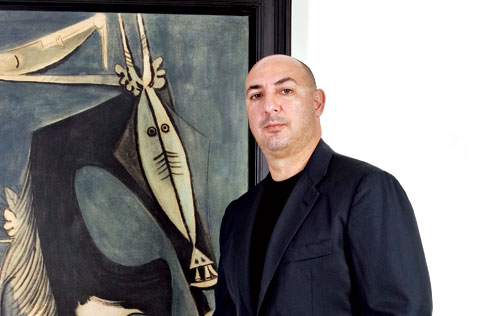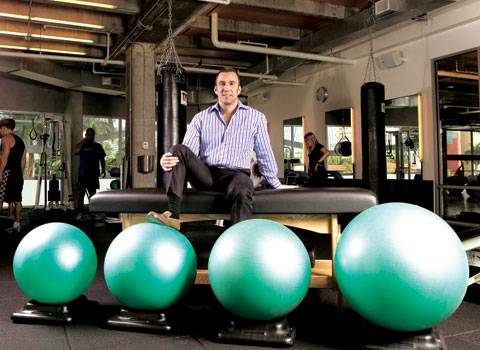By Gary Nader
What I want to tell you about is the next step of Gary Nader Fine Art. I just returned from Dubai, Abu Dhabi, and Doha, Qatar, where I spent 25 days studying the regional art market. This was my third trip to the region.
What I’m planning to do there-and yes, I know it’s very daring-is almost exactly what I have done in Miami. When I came here, the art culture was extremely, extremely poor. There were no major galleries. There were practically no collectors. Twenty-four years ago, art was unheard of in Miami. I implemented programs that helped the city achieve its strong, relevant presence in today’s art world.
When I visited Dubai and Abu Dhabi for the first time, I noticed that the area was incredible in every aspect, including great beaches, hotels, and stores. It was a completely new city from A to Z. But what was it lacking? Exactly what was lacking in Miami in the ’80s: art.
The second time I went was no different. Of course, there were some minor galleries here and there, but the big picture does not rely on minor galleries. So I have made it my goal to create a totally new environment surrounding the arts scene. The people I met in U.A.E. were extremely interested and receptive, probably because nobody had previously offered what I suggested. There are six or seven different programs, the first
of which is an exhibition of my collection of Latin American masters and contemporary art, one of the largest in the world, the likes of which has never been seen in the Middle East. I also plan to put on a show in the gallery of the most important artists in the Middle East, which would include the Gulf and Iran. Why Iran? Because Iran plays a major part in the contemporary creation of the art market in the Middle Eastern countries. I have already put together a research team to discover the most significant artists.
The third part of the plan is to help them create a program for Art in Public Spaces. It is a much-needed program, as they don’t have the slightest idea of how to make this happen. I have decided that the best approach is to bring people in from each country to Miami for training. The training will include museum studies, from direction and curation to handling, packaging, and insurance-all aspects of creating and maintaining a museum.
Museums are practically non-existent in Qatar and U.A.E. They may have all the
resources in the world, but without help, nothing is going to progress in terms of art. So
we’re trying to help them create a Department of Cultural Affairs, the fourth program, so
that we can understand what’s going on in the region, and they can understand what’s going on over here and in Latin America.
For my fifth program, I am taking advantage of the spaces I have been offered by putting
together an exhibition of great modern and contemporary masters: Picasso, Matisse,
Chagall, Botero, Lam. I’m also creating a new venue for the gallery.
People go to Doha or U.A.E. and they want to sell. Selling today is very easy because the
art market is very profitable and is doing extremely well. But what they really need is
training, knowledge, and a solid foundation. I have spoken with the Miami Art Museum
regarding bringing people over to train.
Another concurrent project I will work on in the half-year I plan to spend in Dubai, which
I call number six, is a sculptural park. “Why?” you might ask. Just look at what we did at the Fairchild Tropical Gardens in Miami, where we put the Lichtenstein and the Botero sculptures. It has become one of the places in Miami where people can interact with the
arts in an environment where you can bring the family, the kids, and have a picnic. It is extremely rewarding to see a child look up at a sculpture and say, “Wow!” Nature and art together have always fascinated me; if I could live in a sculptural garden, I would.
When I made my presentations, they asked me, “Why are you the only one? Everybody else just comes to try to sell us pieces.” I want to do things that are more challenging. I could sit at my desk and buy and sell art and go to auctions, but I’ve already done all that. I’ve visited 15 monumental parks in Europe, and more than 10 in the U.S. Add that to my own collection, as well as my access to sculptors, dealers, artists, and architects, and I can make this happen. The important thing is to create something lasting.
They’re building one of the biggest airports in the world and the biggest beaches and the biggest everything and they want culture to be a part of it. They realize that a great city is not just spectacular skyscrapers, but that it must also have a soul. And we’ve seen with Bilbao what one museum can do. That’s been done. That’s why as the seventh and most difficult project, I’m going to create multiple modern and contemporary art museums.
They have the venues, the rotundas, and the roundabouts in which to put the art. The problem is the content-what are you going to put in there? But for that I have a huge surprise that I cannot disclose just yet. That’s another story. And trust me; it’s huge.





















